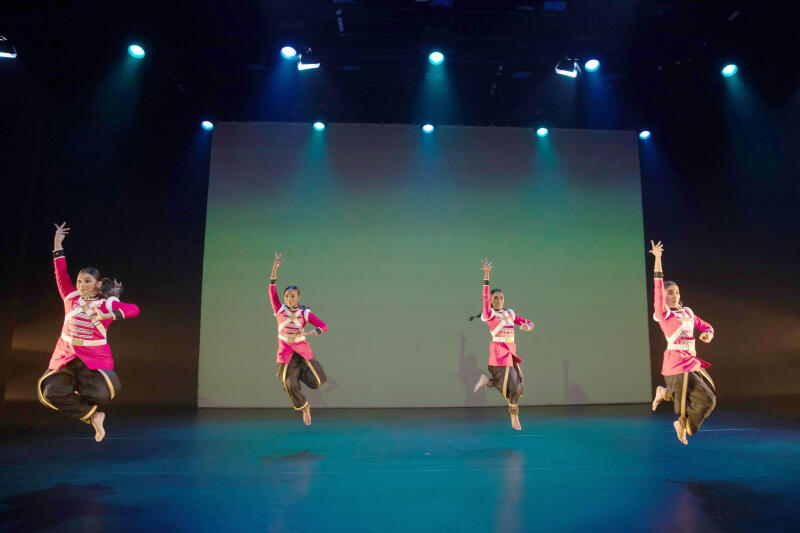Dance review: The lives of Indian sepoys told through dance
Sign up now: Get ST's newsletters delivered to your inbox

The Forgotten Sentinels by Bhaskar's Arts Academy at the Esplanade Theatre Studio.
PHOTO: COURTESY OF ESPLANADE - THEATRES ON THE BAY
Melissa Quek
Follow topic:
Dance
MARABU - THE FORGOTTEN SENTINELS
Bhaskar's Arts Academy
Esplanade Theatre Studio, last Saturday (March 20)
Rather than following the tradition of drawing on Indian epics such as the Mahabharata and the Ramayana, the Marabu trilogy is inspired by the lives of the Indian community as they travelled and settled within Singapore and the Straits of Malacca over the centuries.
In the second instalment of the trilogy, two years after the premiere of Marabu - The First Ripple in 2019, the story picked up in the 18th century, just as the British empire was about to take over from the Dutch.
The Forgotten Sentinels shone a light on the lives of the Indian sepoys who landed with the British East India Company.
Cleverly made costumes caught the eye. The dancers wore the tapered trousers usually associated with bharatanatyam dancers, but they were divided by their upper wear.
Scarlet coats denoted the sepoys, while the female natives wore delicate white kebaya tops.
The scene was set through the projected black outlines of recognisable landmarks in colonial Malacca and a parade of shadow puppets in the square.
The historical details would have been difficult to follow, if it were not for the excerpts of Sangam-era poetry and voiceovers that introduced the various dance segments, creating the feeling of being privy to only brief snapshots of the characters' lives.
The performers made a valiant effort to convey, through movements and facial expressions, the highs and lows of the sepoys' lives, as well as their interactions with the locals.
Rajkumar Bharathi's music, which included vocals and, for this iteration, a cello alongside the traditional instruments, helped to underscore their energy.
But perhaps due to the enforced safe distancing measures, the equal spacing between the dancers created an artificial barrier that the audience could not fully bridge. This detracted from the depth of the relationships depicted onstage.
Marabu was conceptualised by Cultural Medallion recipient and recent Singapore Women's Hall of Fame inductee Santha Bhaskar, and her ability to incorporate influences from the dance styles of the region was a highlight.
Bharatanatyam movement vocabulary melded seamlessly with elements that reflected the character's background or occupation. The iconic stiff-legged march of the sepoys contrasted with the native women's soft swaying arms, paired with strong stamps and complex footwork.
After a series of sad farewells, the performance closed with a mostly upbeat dance that ended with a performer mimicking, tongue-in-cheek, the familiar stance of the statuesque Sir Stamford Raffles projected behind her.

